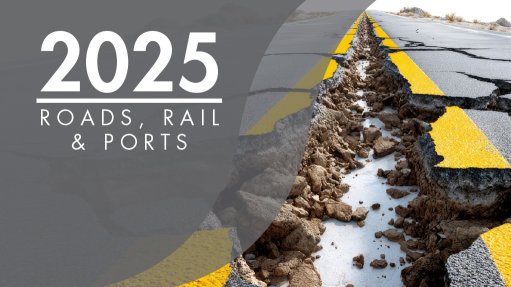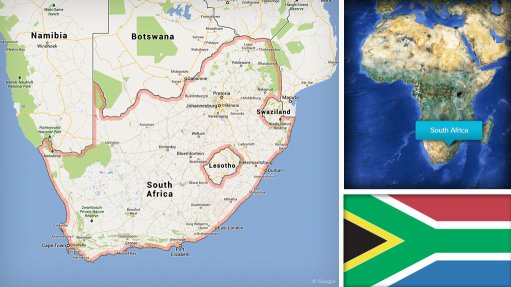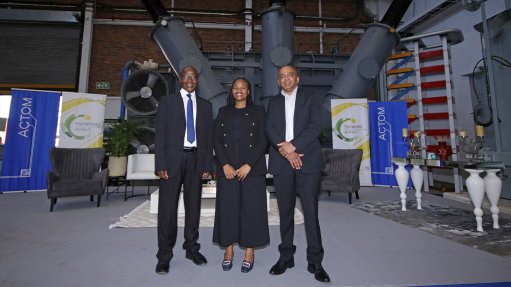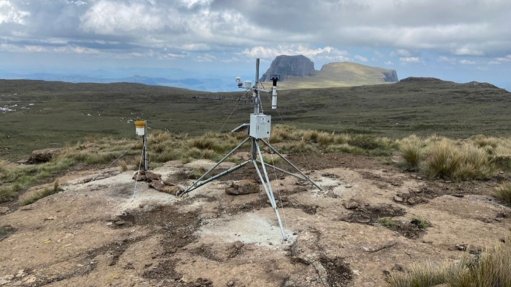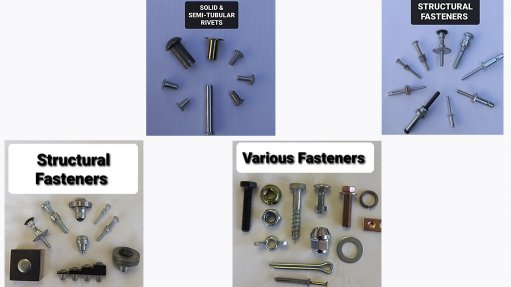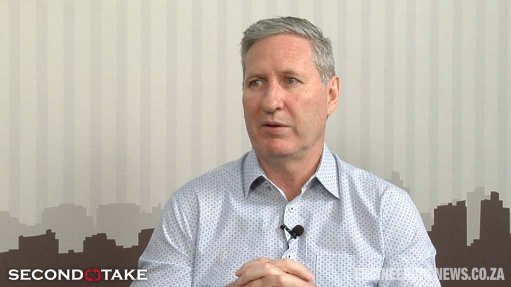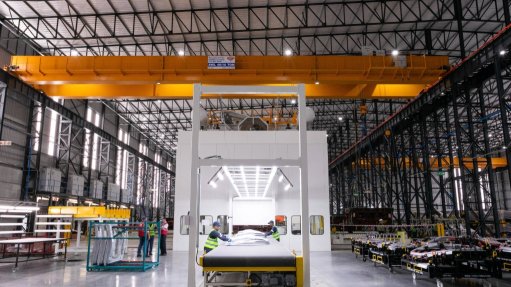Afrimat Construction Index records third successive quarter of increases
The Afrimat Construction Index (ACI) for the fourth quarter of 2024 increased by 0.6% quarter-on-quarter and 2.5% year-on-year – the third successive quarter of improvements.
This is the first time this has occurred since the Covid-19 pandemic-related lockdowns and re-establishes a familiar trend in the construction sector at large, said economist Dr Roelof Botha, who compiled the report on behalf of construction and industrial materials company Afrimat.
The recent lowering of the repo rate, and also the prime overdraft rate, has exerted a marginal positive impact on the ACI, with the year-on-year increase of 2.5% outperforming the year-on-year real GDP growth rate of 0.5% by a considerable margin.
During the fourth quarter of 2024, five of the ten constituent indicators comprising the index had positive year-on-year readings, with four of the top-five ranked indicators remaining among the previous quarter’s top-five performers.
The outstanding performers among the ten year-on-year indicators of the ACI during the fourth quarter include the value of building plans passed by the metros and larger municipalities, which increased by 6.8%, while the value of building materials produced increased by 6.7%.
The value of building material sales increased by 5.4% and employment in construction increased by 2.8%. Wholesale trade sales of construction materials also increased by 2.5%.
The ACI is a composite index of the level of activity within the building and construction sectors.
However, the ACI only increased by 0.6% quarter-on-quarter, compared with 1.5% quarter-on-quarter growth for the economy as a whole, he noted.
This is because withdrawals from the new two-pot retirement system and the two interest rate cuts of 25 basis points each towards the end of 2024 released some pent-up demand for household consumption expenditure.
Household consumption expenditure represents almost 65% of GDP, while capital formation, which encompasses most construction activity, represents 14.5% of total GDP, he said.
“A point of concern is that the real value of construction works remains in the doldrums, with a year-on-year contraction of 3.4% in the fourth quarter in real terms,” Botha highlighted.
The public sector’s contribution to overall capital formation in South Africa has diminished dramatically since the onset of State capture and, more recently, the restrictive monetary policy stance, which took interest rates to their highest level in one-and-a-half decades, he said.
The negative effects that record high interest rates have exerted on the economy in general and the construction industry in particular are well known and this is confirmed by several key economic indicators, including exceptionally high debt-servicing ratios and a persistent decline in the real value of credit extension.
The global ratings organisation S&P Global Purchasing Managers’ Index for South Africa has been below the neutral 50-mark since the beginning of the year and capital formation declined by 3.7% during 2024, which is at a stage when investment in the repair and expansion of the country’s infrastructure has become a critical imperative.
On a positive note, inflation is well and truly under control, with the February reading of the Consumer Price Index remaining at the bottom end of the inflation target range of 3% to 6%.
Lower producer prices, combined with declines in the oil price and a resilient rand exchange rate, should secure further interest rate cuts in the course of this year, said Botha.
The return to employment creation in the construction sector is further welcome news, he said.
Owing to a good performance during the third quarter of 2024, total employment in construction finally managed to return to the pre-Covid-19 level of 1.35-million, although this figure is still well short of the 1.5-million recorded in the third quarter of 2018.
Article Enquiry
Email Article
Save Article
Feedback
To advertise email advertising@creamermedia.co.za or click here
Comments
Press Office
Announcements
What's On
Subscribe to improve your user experience...
Option 1 (equivalent of R125 a month):
Receive a weekly copy of Creamer Media's Engineering News & Mining Weekly magazine
(print copy for those in South Africa and e-magazine for those outside of South Africa)
Receive daily email newsletters
Access to full search results
Access archive of magazine back copies
Access to Projects in Progress
Access to ONE Research Report of your choice in PDF format
Option 2 (equivalent of R375 a month):
All benefits from Option 1
PLUS
Access to Creamer Media's Research Channel Africa for ALL Research Reports, in PDF format, on various industrial and mining sectors
including Electricity; Water; Energy Transition; Hydrogen; Roads, Rail and Ports; Coal; Gold; Platinum; Battery Metals; etc.
Already a subscriber?
Forgotten your password?
Receive weekly copy of Creamer Media's Engineering News & Mining Weekly magazine (print copy for those in South Africa and e-magazine for those outside of South Africa)
➕
Recieve daily email newsletters
➕
Access to full search results
➕
Access archive of magazine back copies
➕
Access to Projects in Progress
➕
Access to ONE Research Report of your choice in PDF format
RESEARCH CHANNEL AFRICA
R4500 (equivalent of R375 a month)
SUBSCRIBEAll benefits from Option 1
➕
Access to Creamer Media's Research Channel Africa for ALL Research Reports on various industrial and mining sectors, in PDF format, including on:
Electricity
➕
Water
➕
Energy Transition
➕
Hydrogen
➕
Roads, Rail and Ports
➕
Coal
➕
Gold
➕
Platinum
➕
Battery Metals
➕
etc.
Receive all benefits from Option 1 or Option 2 delivered to numerous people at your company
➕
Multiple User names and Passwords for simultaneous log-ins
➕
Intranet integration access to all in your organisation








